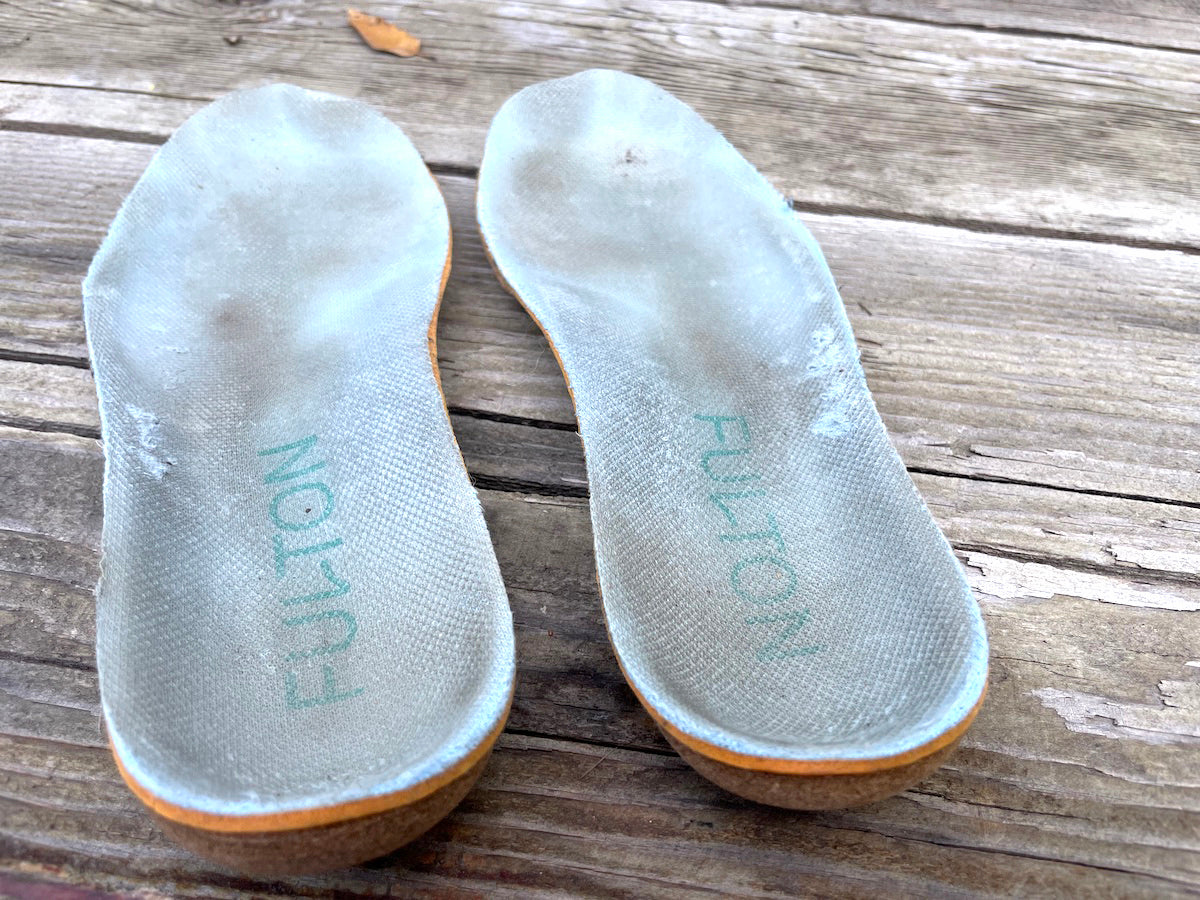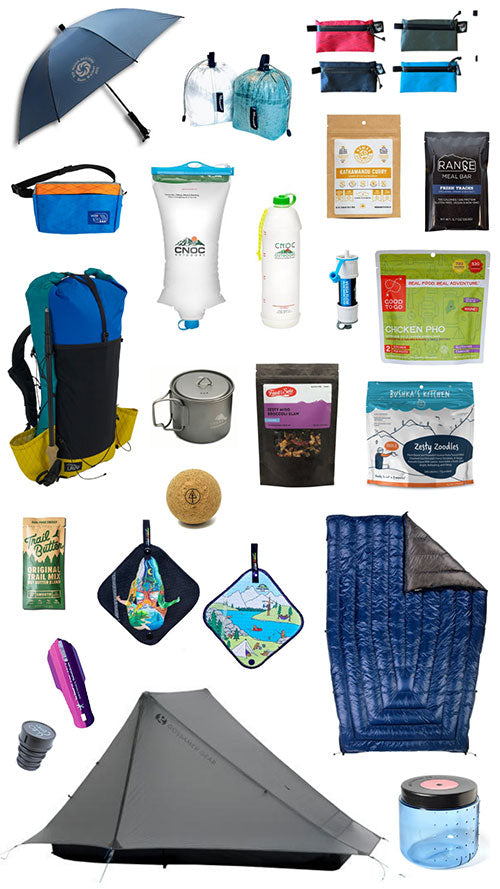
On the PCT in 2019, everyone and their mother seemed to be wearing Altras. You would see their outsole’s signature design — a footprint — all throughout the sandy desert trail in California. I was a very inexperienced hiker, and I kept seeing these prints and hearing people talk about them, but I kept mishearing them described as “ultras.” I didn’t know what they were, and I especially didn’t know what people meant when they described them as “zero drop.”
I was 150 miles into my hike, in Idyllwild, California, and I was shopping for my first pair of trail runners. I’d brought a pair of Gore-Tex boots, a size too small, into the hot, hot desert. My blisters had blisters.

The outdoor retailer there told me I had wide feet and that Altras would fit well, but she was worried about transitioning me straight from boots into zero drop trail running shoes. So, she put me in a pair of Topo Athletic shoes. They have a similarly wide toe box, but wouldn’t be such a shock to my feet because they have a small amount of ‘drop’, making them a good choice for transitioning toward zero drop. In the end they worked out great for me, and I got to keep hiking without my feet being shredded any further.
Cut to 2023. I’ve hiked about 4,000 miles in all sorts of trail runners, and I actually sold shoes for a while at an outdoor retailer. I’ve got all sorts of knowledge to share with you around footwear for thru-hikers (note: this info applies to day hikers and backpackers too!).
What Does “Zero Drop” Even Mean?

Photo by Mitch Collins
Most running shoes lift your heel, causing a ‘drop’ from your heel to your toe. Altras have built their brand on getting rid of that feature. Zero drop gives their shoes an extremely natural ‘barefoot’ feel. Alongside a roomy toe box, Altras end up being a super comfortable fit.
Think about how you walk. Take a second and stride across your living room or whatever cafe you’re reading this in. If you tend to run or hike on your forefoot, a zero or low drop shoe allows you to lean forward and flex your ankle, taking on some of the weight of your steps, lessening the burden on your knees and hips. Make sense?
This new motion for your ankle can be a surprise to feet that aren’t used to it, which is why that retailer in Idyllwild gave me Topo shoes with a 2 or 3 millimeter drop, to help me ease into it. Outside of thru-hiking, you can also just alternate regular shoes and zero drop shoes for a while, allowing your ankles to adjust.

The opposite, then, is true for a high drop shoe — typically around 10 or 11 millimeters. These allow your ankle to rest a bit as you move, which is especially nice for people who tend to strike the ground with their heel.
Considering your shoe’s drop is especially important for anyone who suffers from plantar fasciitis or achilles tendonitis — low or zero drop shoes can exacerbate these issues. Arch support is also a factor, which I’ll touch on a little later. If you’re young and spry and you don’t suffer from those issues, being active in zero drop shoes can strengthen the associated muscle groups, and prevent foot problems later on in life.
Why Would I Want Less Cushion?

When I set out on the Continental Divide Trail in 2021, a lot of people were making the switch to Hoka. Specifically, many thru-hikers had started wearing their Speedgoat model. I remember talking to a hiker who had made the switch, and he said he felt almost two inches taller in them. That’s because Hoka was the herald of the ongoing high-cushion revolution.
Hoka dared to ask, “What if everyone walked on pillows all day?” The answer was, “Everybody’s feet would feel better! But the stakes are high if you roll an ankle.”
The CDT is infamous among thru-hikers for its roadwalks, so it’s no wonder we were all craving a little more cushion beneath our feet. Miles and miles on hard asphalt will do a number on you in a minimalist shoe. The Speedgoat sat in a perfect niche for the CDT — cushy enough to handle the repetitive high-shock miles on the highway but still grippy and light enough for nimble hiking on actual trails.

High cushion shoes are great for preserving your joints when walking on hard surfaces. You could go for Hoka’s max cushion Challenger, Altra’s Olympus, or Topo’s Ultraventure.
Moderate cushion is a great in-between point for variable terrain. Besides the Speedgoat, Salomon also has some great moderately cushioned trail runners, such as the Speedcross and the XA Pro 3D — they’re another brand I trust.
So what niche do low-cushion shoes fill, then? They’re for when you want to get technical and scramble-y. The term you should look for is “direct response.”
When I think of direct response shoes, I think of La Sportiva’s Bushido. They’re an Italian brand that makes climbing shoes, so it’s no wonder their trail runners feel good for rock scrambling. They build a narrow toe box, but often offer wide versions, and their outsole is made of a hard, sticky rubber that helps them grip.
Arch Support — The Cherry On Top

Arch support distributes pressure along the bottom of your feet by filling in the gap under your arches. This in turn lessens impact to the heels and balls of your feet. It also gives you more surface area for your feet to strike, improving stability and balance. Additionally, the feet are the foundation of the entire body, which is why arch support is commonly used to help with knee, hip, and back-related alignment issues.
My rule for arch support is: if you don’t need it, it can still be good for you, and if you do need it, you really need it.

Wondering which camp you fall into? Going to a running shoe store to get a professional to take a look is always a good choice. You may also be able to figure out for yourself if you have a low, medium, or high arch profile. Step into some wet sand and look at the imprint! Are your heel and forefoot much more pronounced? Or can you clearly see the whole outline of your foot?
You can buy a shoe with arch support built in, but that’s a bit of a toss-up. It’s better to invest in an insole. You can get one that matches your arch profile, or you can get an orthotic made specifically for you, though that can be expensive. These cork insoles mold to your feet, making them a great choice for flat feet, high arches, and everything in between.
Bottom Line

Photo by Mitch Collins
Happy feet make for a happy hiker. And the reverse is also true, miserable feet make for a miserable hiker. Take the time to figure out your own personal footwear needs. What type of terrain do you intend to tackle? What amount of drop, cushion and arch support will be most supportive for you on that endeavor? If possible, go to a store where you can try on several pairs of trail runners and talk to an expert. You may be surprised by just how much confidence the right pair of shoes can inspire on trail!
Matthew Kok is an essayist, a poet, a traveler, and absolutely in love with the world outside. They are currently operating out of Manapouri, a little town in Aotearoa–South Island, New Zealand. You can find them curled up with Stormy the housecat or cooking up big, elaborate breakfasts late in the morning. You can also find them on Instagram at @matt.kok

















4 comments
James
Okay… great info… but you didn’t really answer the question posed in the title, nor offer real suggestions for that question. I run in Altra Lone Peak and have for many years. I tried the Olympus last year for a specific race and it was just crap… yes, loads of cushion, but zero feedback from the trail surface underfoot. Topo, equally, were horrible so I’m back to running in my tried and true Lone Peak until I venture out again to try another challenger.
Matthew Kok
Hi Rick!
You’re right, a rock plate is most often associated with trail running over backpacking in trail runners. I would say the stakes are simply higher when running for sharp rocks underfoot. A rock plate will always add more stability and protection, though, so it’s not a bad thing to have while backpacking either.
For me, if I’m in a high-cushion shoe, I’m not worried about a rock plate because I’m not feeling that much underfoot anyway. All that cushion can protect you pretty well. If you’re in more moderate/low cushion, it’s a great thing to have. These days some brands (I think Altra included?) will have removable rock plates in their retail shoe boxes. If you find yourself in a pair without that feature and you’re looking for one, maybe you can track some down online.
Thanks for reading!
Rick Niersbach
Great info on shoes, heel drop, inserts, etc. I’m wondering about the need, value of a “rock plate” built into the show. Some have it, some don’t. I’ve always associated this item more with trail running than backpacking. What do you know about this? Thank you.
Jeff Coleman
Excellent article!!